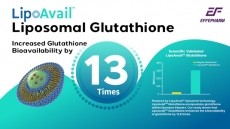Green tea extract shows potential sperm benefits: Lab study

Researchers from the University of Calabria report that EGCG (epigallocatechin gallate) at low doses improved measures of sperm quality, including motility.
Green tea contains between 30 and 40% of water-extractable polyphenols, while black tea (green tea that has been oxidized by fermentation) contains between 3 and 10%. Oolong tea is semi-fermented tea and is somewhere between green and black tea. The four primary polyphenols found in fresh tealeaves are epigallocatechin gallate (EGCG), epigallocatechin, epicatechin gallate, and epicatechin.
“In the present study, we demonstrate for the first time that tightly depending on the used concentration, EGCG/ estrogen receptors are able to improve fertilization potential of the human male gamete, evidencing the specific effects on motility, viability, and energy expenditure in human sperm,” wrote the researchers in Molecular Nutrition & Food Research.
However, as Paracelsus once said, "the dose makes the poison", and the negative effects at high concentrations led the researchers to conclude that they cannot totally exclude that “excessive EGCG concentrations seem to be harmful for parameters related to reproduction”.
Nutrients and fertility
Sub-fertility in men is reported to account for between 25 and 30% of all infertility causes, and is listed as one of the many reasons that birth rates are falling in Western countries.
In addition, it has been claimed that about 50% of male fertility is the result of unknown causes (idiopathic), and nutrition has been touted as a potential way of boosting the quality of sperm.
Study details
The Italian researchers exposed human sperm samples to a range of concentrations of EGCG. Results showed that, at low concentrations, EGCG was associated with “increased sperm motility, viability, and phosphorylation of proteins controlling cell survival”.
However, at high concentrations “produced opposite effects”, said the researchers.
Commenting on the potential mechanism, they noted that low dose EGCG seemed to exert its benefits via an interaction with estrogen receptors.
“Taken together all our data acquire more emphasis corroborating previous findings indicating that, at medium dosages, EGCG increases the number of porcine sperms that bind to [the membrane surrounding an egg cell],” they said.
“We defined the molecular mechanisms of EGCG action on male fertilizing potential thus suggesting that EGCG may be an effective supplement for improvement in human [assisted reproductive technology (ART)].”
Source: Molecular Nutrition & Food Research
Volume 56, Issue 11, Pages 1655–1664, doi: 10.1002/mnfr.201200190
“Epigallocatechin gallate affects survival and metabolism of human sperm”
Authors: F. De Amicis, M. Santoro, C. Guido, A. Russo, S. Aquila















